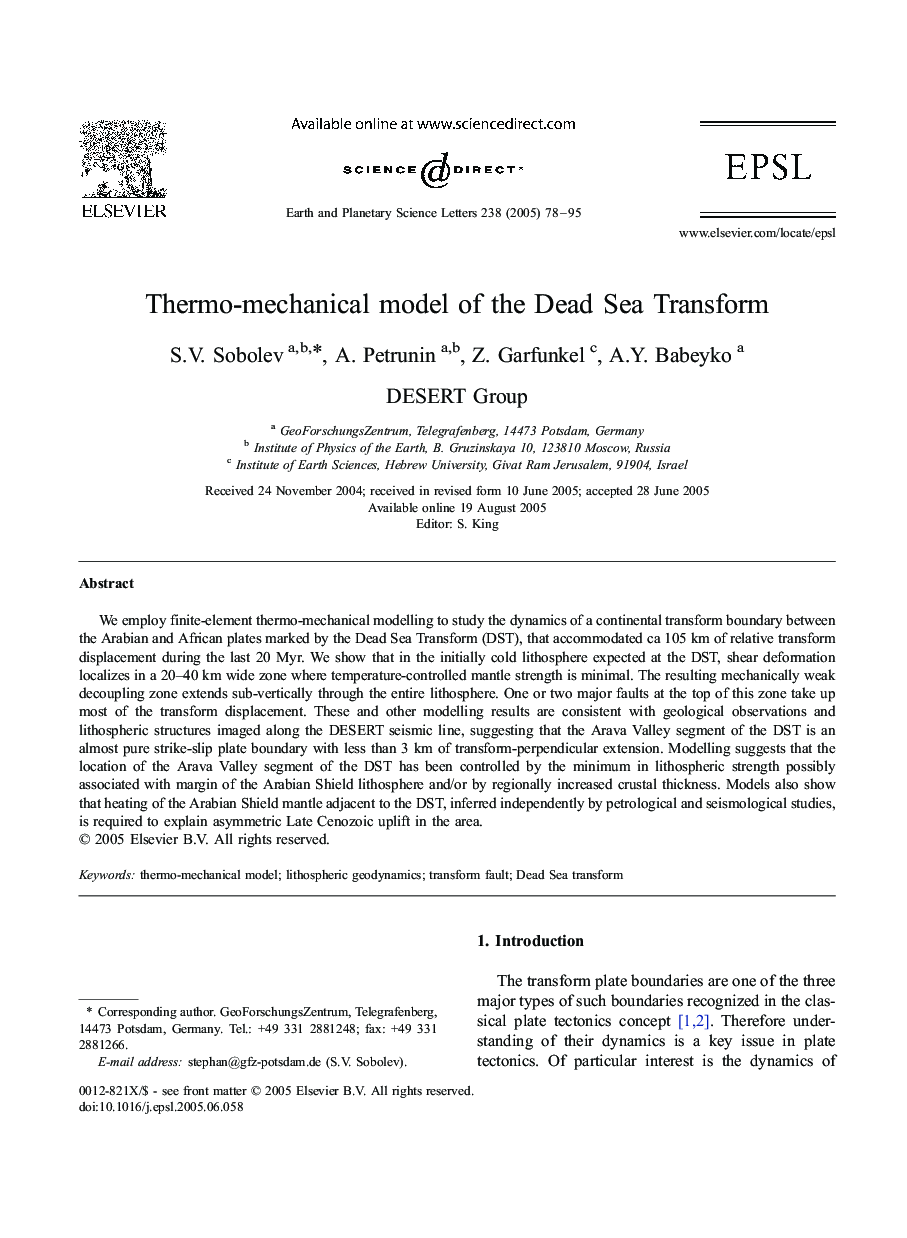| Article ID | Journal | Published Year | Pages | File Type |
|---|---|---|---|---|
| 9522089 | Earth and Planetary Science Letters | 2005 | 18 Pages |
Abstract
We employ finite-element thermo-mechanical modelling to study the dynamics of a continental transform boundary between the Arabian and African plates marked by the Dead Sea Transform (DST), that accommodated ca 105 km of relative transform displacement during the last 20 Myr. We show that in the initially cold lithosphere expected at the DST, shear deformation localizes in a 20-40 km wide zone where temperature-controlled mantle strength is minimal. The resulting mechanically weak decoupling zone extends sub-vertically through the entire lithosphere. One or two major faults at the top of this zone take up most of the transform displacement. These and other modelling results are consistent with geological observations and lithospheric structures imaged along the DESERT seismic line, suggesting that the Arava Valley segment of the DST is an almost pure strike-slip plate boundary with less than 3 km of transform-perpendicular extension. Modelling suggests that the location of the Arava Valley segment of the DST has been controlled by the minimum in lithospheric strength possibly associated with margin of the Arabian Shield lithosphere and/or by regionally increased crustal thickness. Models also show that heating of the Arabian Shield mantle adjacent to the DST, inferred independently by petrological and seismological studies, is required to explain asymmetric Late Cenozoic uplift in the area.
Related Topics
Physical Sciences and Engineering
Earth and Planetary Sciences
Earth and Planetary Sciences (General)
Authors
S.V. Sobolev, A. Petrunin, Z. Garfunkel, A.Y. Babeyko, DESERT Group DESERT Group,
